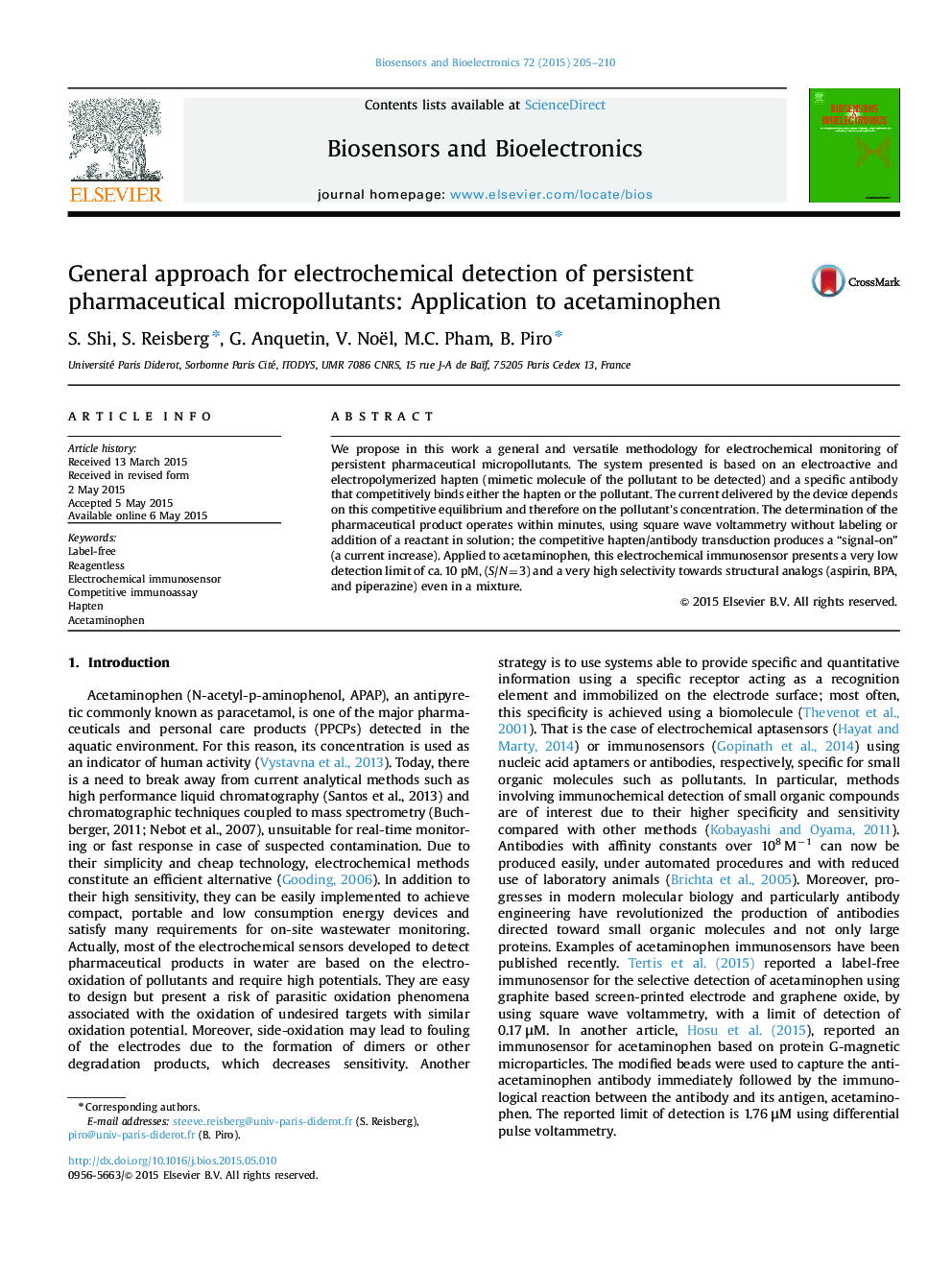| Article ID | Journal | Published Year | Pages | File Type |
|---|---|---|---|---|
| 866314 | Biosensors and Bioelectronics | 2015 | 6 Pages |
•Reagentless electrochemical immunosensor against organic pollutants.•Versatile functionalization through click-chemistry.•Very high selectivity towards structural analogs (aspirin, BPA, and piperazine) even in a mixture.•Detection limit in the pM range.
We propose in this work a general and versatile methodology for electrochemical monitoring of persistent pharmaceutical micropollutants. The system presented is based on an electroactive and electropolymerized hapten (mimetic molecule of the pollutant to be detected) and a specific antibody that competitively binds either the hapten or the pollutant. The current delivered by the device depends on this competitive equilibrium and therefore on the pollutant׳s concentration. The determination of the pharmaceutical product operates within minutes, using square wave voltammetry without labeling or addition of a reactant in solution; the competitive hapten/antibody transduction produces a “signal-on” (a current increase). Applied to acetaminophen, this electrochemical immunosensor presents a very low detection limit of ca. 10 pM, (S/N=3) and a very high selectivity towards structural analogs (aspirin, BPA, and piperazine) even in a mixture.
